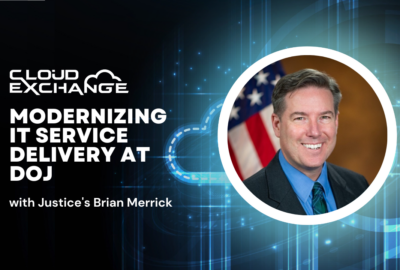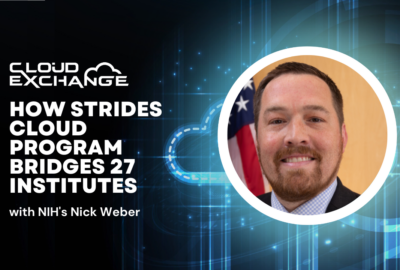

The federal government’s embrace of hybrid, multicloud environments doesn’t surprise Red Hat’s Ben Cushing, as it echoes similar hybrid growth in the...
Like new and used car prices during the pandemic, cloud services can create their own version of sticker shock.
As agencies transition more services and data into the cloud, chief information officers and other leaders must become more aware than ever of rising costs.
“There are a lot of costs associated with having tons and tons of data in the cloud, especially when you have egress costs,” said Ben Cushing, chief architect for health and life sciences for Red Hat. “Agencies are rebalancing that a bit, trying to use as much of their on-premise data centers as possible for storage and a lot of times expanding the compute capability in the cloud rather than the storage capability.”
Cushing said during the Federal News Network Cloud Exchange 2023 that he expects that trend to continue in government as it echoes the growth of the hybrid model also taking place in industry.
When agencies started moving to the cloud more than a decade ago, the overarching thinking was cloud would save money. But over time, IT teams have realized operational costs didn’t necessarily come down even as they were getting more services for the same or a little more money.
Now, as agencies are implementing multicloud environments and continuing to support smaller on-premise footprints, Cushing said many public sector organizations have concluded they can’t put everything in the cloud and definitely not in just one cloud.
He pointed to agencies with high-performance computing needs as good examples of where this hybrid cloud setup is working well and driving innovation.
“I expect to see a lot of the high-performance computing world move more into cloud computing. All of the public clouds really have the capability to meet those demands fairly well,” Cushing said. “But it’s very likely that scheduled jobs are going to move between the on-premise centers and cloud computing.”
The departments of Health and Human Services and Veterans Affairs are leaning into those services for good reasons, he said. “But in order for them to function properly within the agencies themselves, they have to connect them to the existing services, a lot of which are still hosted on premise.”
One challenge in the hybrid environment is moving data between on-premise and cloud systems. Cushing said a Kubernetes platform is one answer to providing the flexibility and nimbleness that applications need.
Both the use of Kubernetes and hybrid environments open the door to greater innovation as well.
Cushing said the physical limitations of on-premise data centers such as storage, memory and compute processing, hampered agencies’ ability to move quickly to new services.
But now, hybrid environments and technology tools let agencies accelerate their transformation of services and solving of problems.
“I think the biggest barrier at that point is the process. How do you how do you take innovation into the enterprise? How do you actually make it actionable?” he said. “VA’s Office of the Innovation Ecosystem is doing an amazing job at this. They have a program designed for this called Pathfinder, where you essentially apply with your innovative idea and they take you on a path, like a Shark Tank type of path with the chief health informatics officers. Coming out of that, you either have a project to work with or you don’t. And if you do, there’s an entire incubation space using synthetic patient data where you can actually test out your idea in a safe place.”
To read or watch other sessions on demand, go to our 2023 Cloud Exchange event page.
Copyright © 2025 Federal News Network. All rights reserved. This website is not intended for users located within the European Economic Area.




Chief Architect, Health and Life Sciences, Red Hat

Executive Editor, Federal News Network

Chief Architect, Health and Life Sciences, Red Hat

Executive Editor, Federal News Network
Jason Miller has been executive editor of Federal News Network since 2008. Jason directs the news coverage on all federal issues. He has also produced several news series – among them on whistleblower retaliation at the SBA, the overall impact of President Obama’s first term, cross-agency priority goals, shared services and procurement reform.
